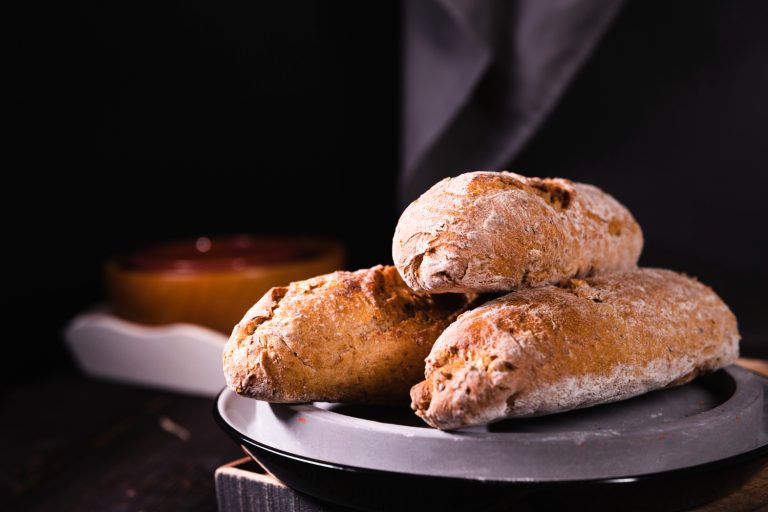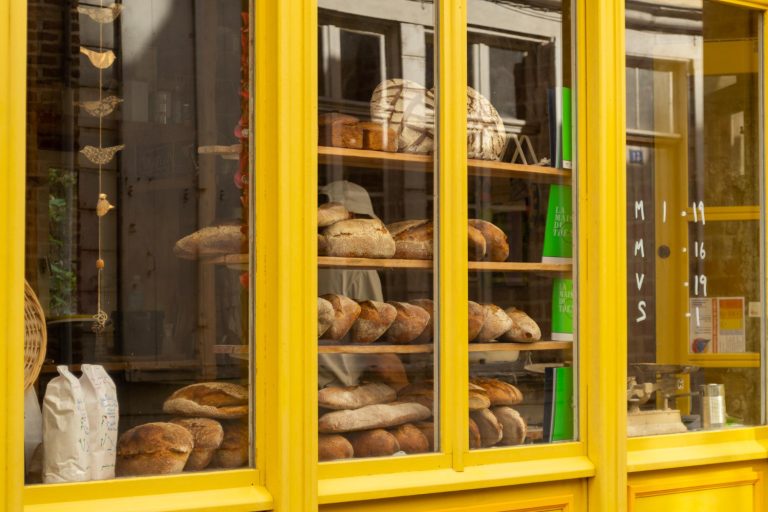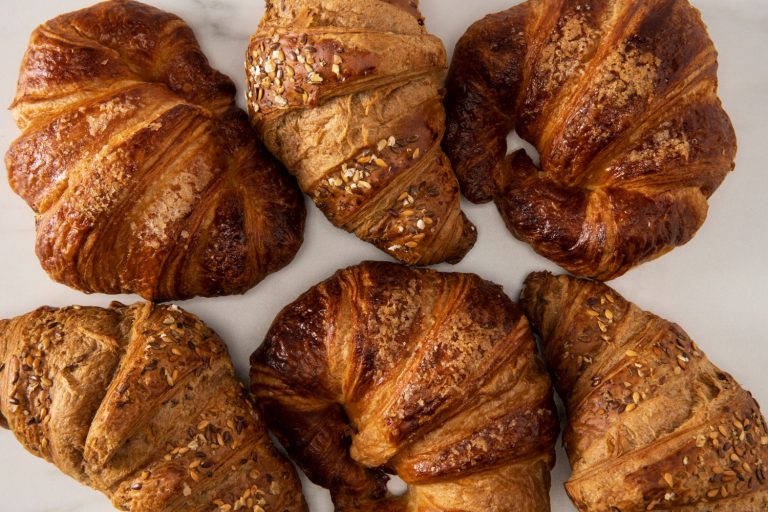How to Start Baking Gluten-Free Sourdough Bread for Beginners
A shocking 95% of people who attempt gluten-free bread making end up with dense, brick-like loaves that no one wants to eat.
The idea of creating perfect, crusty sourdough bread without gluten might seem impossible. Most people wonder if gluten isn’t the key ingredient that gives bread its signature chewy texture and beautiful air pockets.
Here’s the good news: you can make incredible gluten-free sourdough bread that rivals traditional wheat-based loaves. Success comes from understanding the right flour combinations and becoming skilled at a few key techniques.
You can create your own gluten-free sourdough starter easily, whether you have celiac disease, gluten sensitivity, or want healthier bread alternatives. The right ingredients, tools, and guidance will help you bake Instagram-worthy loaves.
Are you excited to begin your gluten-free sourdough experience? Let’s head over to everything you need to know – from creating your first starter to pulling that perfect golden loaf from your oven.
Essential Tools and Ingredients for GF Sourdough Success
Let’s begin our gluten-free sourdough trip by getting the right tools and ingredients. Success in gluten-free sourdough baking starts with proper equipment and a solid grasp of ingredients.
Must-Have Equipment and Why You Need It
These tools will give a substantial boost to your baking success:
- Digital Kitchen Scale – Precision is vital for gluten-free baking
- Glass or Ceramic Mixing Bowls – Metal can negatively affect dough rising
- Banneton Basket – Provides proper support during proofing
- Dutch Oven – Creates the perfect crust and steam environment
- Plastic Dough Scraper – Helps handle sticky dough without metal contact
- Digital Thermometer – Will give a proper internal temperature of 210°F
Understanding Different Gluten-Free Flours
The secret to excellent gluten-free sourdough lies in knowing your flour options. Here are our top-performing flour choices:
- Brown Rice Flour: Creates a more bubbly starter and provides excellent structure
- Sorghum Flour: Our MVP for smooth texture and mild flavor
- Millet Flour: Adds slight sweetness and creates a tender crumb
- Teff Flour: Brings rich flavor and excellent nutritional benefits
- Quinoa Flour: Contributes extra sour notes perfect for sourdough
Additional Ingredients That Improve GF Sourdough
Several ingredients beyond our simple flours are vital for success. Psyllium husk works as our gluten replacement and provides the essential binding properties and elasticity needed for proper dough structure. Tapioca starch (about 15% of total flour weight) helps achieve proper gelling and structure.
Water quality matters substantially in the baking process. Filtered or spring water works best since chlorinated tap water can inhibit fermentation. Multiple flour types combined work better than using a single flour because this helps mimic wheat flour’s complex properties.
It’s worth mentioning that store-bought gluten-free blends often contain high amounts of starches and gums. Creating our own flour combinations gives complete control over quality and allows ratio adjustments based on specific needs.
Creating Your First Gluten-Free Sourdough Starter
A thriving gluten-free sourdough starter resembles a new pet that needs regular feeding, proper temperature, and lots of patience. The science behind this living culture helps tremendously in achieving success.
Step-by-Step Starter Creation Guide
Two simple ingredients start this process: gluten-free flour (brown rice or buckwheat) and filtered water. The ideal fermentation temperature should be around 70-75°F (21-24°C). Here’s our tested process:
Day 1-3: Mix equal parts flour and water in a clean glass container. Cover with a breathable cloth and let it sit for 72 hours.
Days 4-7: The magic happens now. The feeding schedule works like this:
- Remove half the starter
- Add fresh flour and water in equal parts
- Stir vigorously
- Repeat every 12 hours
Signs of a Healthy Starter
These key indicators show a thriving starter:
- Active Bubbling: Your starter should show consistent bubble formation throughout
- Pleasant Aroma: A healthy starter develops a mildly sour, yeasty smell
- Predictable Rise: It should double in size within 4-8 hours after feeding
Common Starter Problems and Solutions
Sluggish Activity? Your starter might not rise well because of these factors:
- Temperature: Keep it warm (70-75°F) for optimal yeast activity
- Water Quality: Use filtered water, as chlorine can kill beneficial bacteria
- Feeding Schedule: Maintain consistent feeding times
Strange Colors or Smells? A slight pink tinge appears normal in the first few days, but any mold growth means you should start over. A dark liquid on top (called “hooch”) indicates your starter needs more frequent feeding.
The creation of a gluten-free sourdough starter typically takes 7-10 days. Patience and consistency remain your best allies during this process. You’ll soon have a vibrant, active starter ready for baking delicious gluten-free sourdough bread when you maintain proper care.
Mastering Basic Gluten-Free Sourdough Techniques
GF sourdough baking requires a different mindset than traditional bread making. Our extensive testing has shown that GF sourdough just needs its own unique approach to create that perfect loaf.
Proper Mixing and Folding Methods
GF dough works best with a single-step mixing process, unlike wheat-based sourdough. Here’s our tested method:
- Combine all dry ingredients thoroughly
- Add wet ingredients at room temperature
- Mix until well combined
- Transfer directly to proofing container
- Avoid excessive handling
Traditional folding techniques aren’t needed for GF sourdough. Less handling guides you to better results – think of it more like cake batter than bread dough.
Temperature Control and Fermentation
Temperature control is a vital part of successful fermentation. The dough should stay between 70-80°F, with 75°F being ideal. Here are our key temperature guidelines:
- Keep your kitchen environment consistent
- Use lukewarm water to maintain optimal temperature
- Monitor dough temperature with a thermometer
- Adjust proofing time based on ambient temperature
GF sourdough can quickly go from perfectly proofed to over-proofed. It’s better to under-proof than end up with a deflated loaf.
Shaping and Scoring Tips for GF Dough
The GF dough needs a gentle touch during shaping. We can’t get the same tight skin as traditional sourdough, but well-defined shapes are still possible. A banneton basket with generous brown rice flour dusting supports the dough while proofing.
Scoring depth matters substantially. The cuts should be at least 1-inch deep to direct the bread’s rise effectively. This prevents random cracking and will give a controlled oven spring.
The Dutch oven needs a full hour of preheating before baking. This creates that initial heat burst that’s vital for proper rise. Parchment paper helps transfer the dough without deflating our carefully proofed loaf.
Note that GF sourdough performs best with a single proof followed by baking when ready, unlike traditional sourdough that can handle multiple rises. This helps maintain the delicate structure we’ve built.
Understanding the Science of GF Sourdough
Understanding the science behind gluten-free sourdough has revolutionized our approach to this ancient bread-making art. The fascinating world of fermentation works differently in gluten-free baking.
How Fermentation Works Without Gluten
Gluten-free sourdough fermentation happens through a unique ecosystem of lactic acid bacteria (LAB) and yeasts, typically in a ratio of 100:1. These microorganisms work together to create the perfect environment for bread rising, even without gluten’s traditional structure-building properties.
The main stars of our fermentation process are:
- LAB: Responsible for dough acidification and enzymatic modifications
- Yeasts: Produce carbon dioxide for bread rise
- Beneficial bacteria: Break down complex carbohydrates
Role of Different Flours in Structure
Different gluten-free flours play distinct roles in creating the perfect loaf structure. Research shows that white rice, brown rice, quinoa, and chickpea proteins respond well to fermentation processes.
The magic happens when we combine these flours strategically. To cite an instance, white rice flour in our sourdough shows a remarkable 28% decrease in crumb firmness. Quinoa-based sourdough shows a 6% increase in specific volume.
Impact of Hydration Levels
Hydration’s role in gluten-free sourdough stands as a vital scientific aspect we’ve found. Traditional bread differs from our gluten-free versions that need higher hydration levels – typically between 120-130% for optimal results.
Proper hydration affects our bread in these ways:
- Makes proper fermentation and microbial activity possible
- Creates better gas retention for proper rise
- Improves crumb structure and texture
- Affects baking time and temperature
Gluten-free doughs need 50-218% water content. Higher hydration requires adjustments to our baking approach. We use lower temperatures and longer baking times to remove excess moisture without over-browning the crust.
Water absorption varies with different flour combinations. Whole grain flours need more water due to their higher fiber content. We calculate our hydration ratios based on the specific flour blend carefully.
Our experimentation shows that sourdough fermentation improves our gluten-free bread’s texture, aroma, and shelf life by a lot. The LAB’s complex metabolic activity creates positive changes that turn what could be a dense, brick-like loaf into something truly spectacular.
Baking Your First GF Sourdough Loaf
The most exciting part of our gluten-free sourdough trip starts now – turning our well-nurtured starter into a beautiful loaf of bread. Each significant step ensures your first bake becomes a success.
Pre-Bake Preparation Steps
A successful bake starts with an active, happy starter. The starter should double in size and show visible air bubbles before you begin. Feed your starter 4-12 hours before starting the baking process.
The workspace needs these essentials:
- Parchment paper for easy transfer
- Rice flour for dusting
- Sharp knife or bread lame for scoring
- Dutch oven for baking
Optimal Baking Methods and Times
Our testing has perfected this proven process:
- Preheat the Dutch oven at 500°F for a full hour
- Score the dough with deep cuts (at least 1-inch deep)
- Lower temperature to 450°F when the dough goes in
- Bake covered for 40 minutes
- Reduce temperature to 425°F and remove lid
- Continue baking uncovered for another 40 minutes
Your finished loaf’s internal temperature should reach at least 210°F. Extended baking time plays a significant role in gluten-free sourdough because it retains moisture longer than traditional bread.
Cooling and Storage Guidelines
The Cooling Process Patience matters here – proper cooling makes all the difference. Cutting the bread too early lets steam escape and creates a gummy texture. The bread needs to cool completely – at least 6 hours, though overnight works best.
Storage Solutions These methods work best to store gluten-free sourdough:
- Room temperature: Keep in an airtight container for up to 3 days
- Freezer storage: Wrap individual slices in plastic wrap and freeze for up to 3 months
- Avoid refrigeration: Moisture leads to mold development
Slightly stale bread can come back to life. Heat it in a 300°F oven for 10 minutes to refresh the crust. Frozen slices can thaw at room temperature or go straight into the toaster.
Each loaf teaches something new. Your first attempt might not be perfect, but don’t worry. Gluten-free sourdough baking gets better with practice as you learn to understand your dough’s needs. The texture and rise improve naturally as you become familiar with the process.
Conclusion
Creating delicious gluten-free sourdough bread might seem overwhelming at first. Our results show that understanding the basics leads to success. With the right tools, quality ingredients, and proper techniques, you can create beautiful GF sourdough loaves in your kitchen.
Your experience with starter creation, dough handling, and baking techniques will show that GF sourdough needs a different approach than traditional bread making. Higher hydration levels, careful temperature control, and extended baking times are vital parts of creating that perfect loaf.
The science backs our methods. The unique interaction between lactic acid bacteria, yeasts, and GF flours produces bread with excellent texture, flavor, and shelf life. Each bake teaches valuable lessons that make you a better baker.
Stay patient, trust the process, and celebrate your wins. You’ll soon become skilled at gluten-free sourdough baking and create nutritious, delicious bread that matches any traditional wheat-based loaf.
FAQs
Q1. Can I create a sourdough starter using gluten-free flour? Yes, you can create a sourdough starter using gluten-free flour. Choose flours like brown rice, buckwheat, or sorghum. The process may take longer than with wheat flour, so be patient and consistent with your feeding schedule. Monitor your starter for signs of activity such as bubbling and a slightly sour aroma.
Q2. How do I maintain my gluten-free sourdough starter? To maintain your gluten-free starter, feed it regularly with equal parts water and gluten-free flour. If you bake frequently, keep it at room temperature and feed daily. For less frequent baking, store in the refrigerator and feed weekly. Always use filtered water and keep the starter away from foods that could cause mold.
Q3. What are some key tips for making good gluten-free sourdough bread? For successful gluten-free sourdough, use high-protein flours like sorghum or millet, add binders like psyllium husk, and maintain proper hydration levels (usually higher than traditional sourdough). Use room temperature ingredients, don’t over-proof the dough, and bake at the right temperature and time. Remember, less handling often leads to better results with gluten-free dough.
Q4. Why isn’t my gluten-free sourdough bread rising properly? If your gluten-free sourdough isn’t rising well, check your starter’s activity and ensure it’s properly fed. Maintain optimal fermentation temperature (around 70-75°F) and use filtered water to avoid inhibiting yeast growth. Remember that gluten-free dough can over-proof quickly, so it’s better to slightly under-proof than risk deflation.
Q5. How should I store my gluten-free sourdough bread? Allow your gluten-free sourdough bread to cool completely before storing, ideally for at least 6 hours. Store at room temperature in an airtight container for up to 3 days, or freeze individual slices for up to 3 months. Avoid refrigeration as it can lead to mold development. To refresh slightly stale bread, warm it in a 300°F oven for about 10 minutes.






